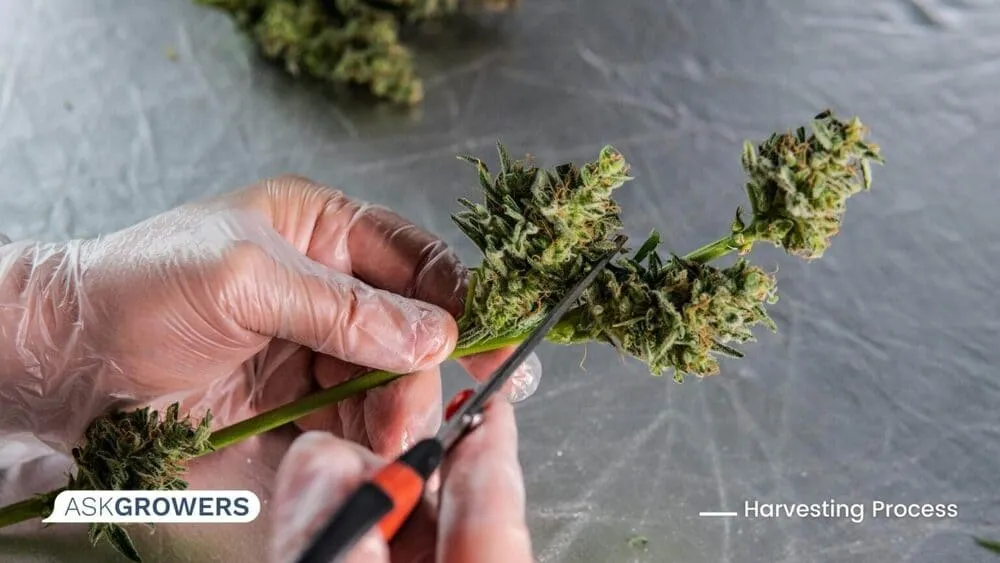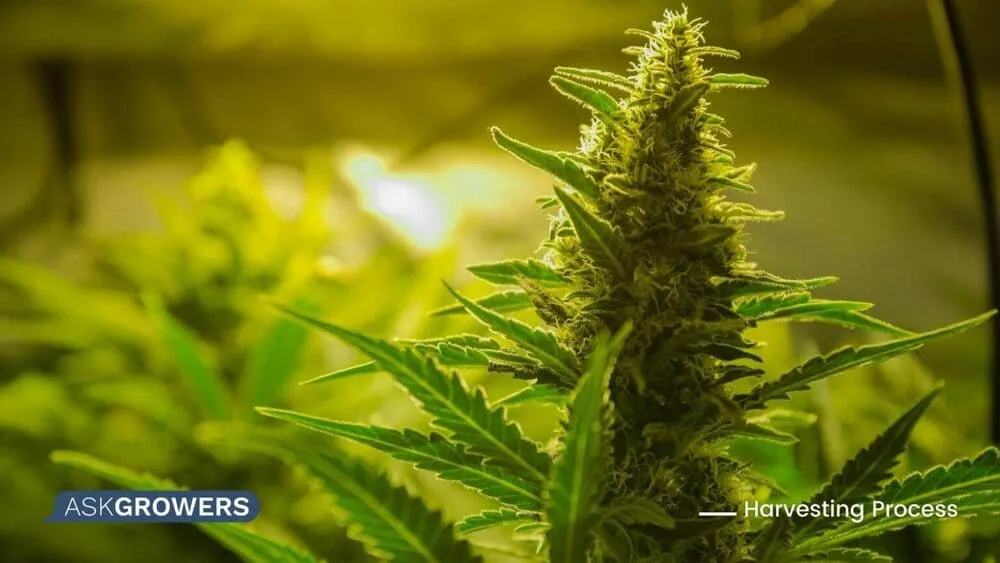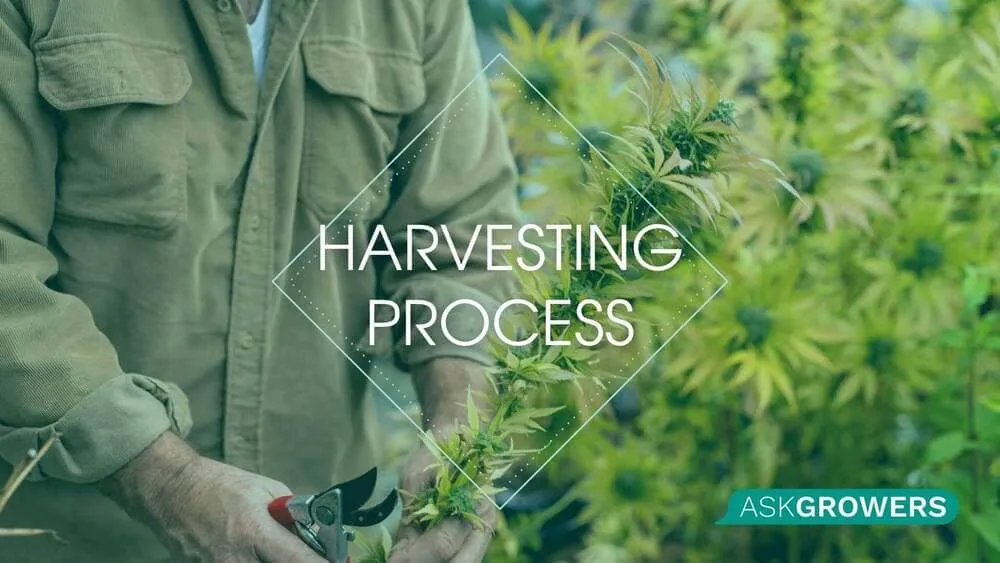According to a German study, indoor cannabis plants require eight weeks on average to finish their flowering cycle before they are ready to harvest. It takes a little longer for outdoor plants. At last, when flowers reach maturity, growers take on the task of harvesting.
The way your crop is harvested will have a crucial impact on the cannabis potency, quality, and shelf life. Though yielding techniques can vary from garden to garden, there are some basic steps that every cultivator should follow. This article highlights the main stages of this process.
Best Way to Harvest Marijuana
As the harvest time draws near, all cultivators start counting the final days like kids before Christmas. It is not surprising since it takes months of hard work until cannabis plants are ready to be chopped.
The harvesting process is one of the most exciting steps and requires patience. It doesn’t include just cutting down and trimming buds but a couple of extra steps. Growers have to dry and cure buds before they can smoke them.
Tools for Harvesting
Before you start, make sure you have all the necessary cannabis harvesting tools:
- Scissors (to trim buds) and pruners (to trim thick branches)
- Rubbing alcohol to clean the tools if they get sticky
- Latex gloves
- Clothes that can get dirty
- Collection bowl or tray
- Strings to tie branches for hang-drying
Set your workplace in advance by finding a comfortable chair and giving yourself plenty of space.
Stages of the Harvesting Process
The step-by-step marijuana harvesting guide is given below:

- Trimming. Cut off big branches and make sure you are delicate with buds. If the plants are small, cut them down at their base. One by one, cut out the branches. Get rid of fan leaves if they show signs of mold or fungi. Place the branches on the collection tray. Divide them into individual buds. They may have a different size and require a different humidity level in the drying place.
- Drying. Dry buds in a dark, ventilated room. You can use drying racks, hanging the branches or whole plants upside down with a wire. If the plants lay on a surface, rotate them to keep their shape. If there is no airflow in the room/tent, turn on a fan, but don’t leave it blowing directly on the drying colas. Keep a temperature level around 68°F (20°C) and a humidity level around 50%. Usually, the drying process takes 10-14 days. Examine the branches every day to make sure no mold is growing. In case you find some, cut this bud and throw it away.
- Curing. When the drying process is over, store the buds in sealed glass jars (not in plastic bags) in a dark place. Tag the jars with the strain name and the harvesting date. The truth is there is still some water left in the buds, and the curing process will let you get rid of the remaining liquid. The moisture in the buds will disappear, so you can weigh them before and after curing. For the first two weeks, open the jars once or twice a day for 1 hour, especially when some condensation forms on the inside glass. When moist air is replaced by dry air, seal the jars again. Don’t expose the buds to light and oxygen since it causes THC degradation. Keep them at a temperature of 68°F (20°C) and a humidity level around 58-65%. The curing process can take from 3 weeks to one month.
After the last phase, your buds will taste and burn perfectly.
Wet vs. Dry Trimming
Note that there are two different ways how to harvest weed plants:
- Wet trimming
- Dry trimming
In wet trimming, you cut down the plant, trim all buds, and then dry them for several days. This method is easier; besides, sugar leaves are not dried up and closed in on the buds. On the other hand, more chlorophyll remains in the leaves and may lead to a grass-like aroma.
In dry trimming, you cut down the plant and hang it to dry. The buds are trimmed when they are thoroughly dried. It will be helpful to cut branches with a hook on one end to make them easy to hang. This harvesting method is more labor- and time-consuming but considered the better approach.
Harvesting Process Specifics
Here are some cannabis harvest tips that will allow you to make the process easier:

- A week before harvesting, flush weed plants with mere water without adding nutrients, especially fertilizers that contain nitrogen.
- Seven-ten days before harvesting, reduce light intensity and increase darker hours to promote tighter buds (14 hours lights off and 10 hours lights on).
- Maintain dry air (40-45% humidity).
- Keep your scissors/shears sharp and make sure you have clean bins and handling areas.
- If you grow different strains, some may be ready for harvesting prior to others.
- Freshly-chopped buds produce a strong smell, so be prepared to manage these odors and take steps to keep them under control by installing special equipment or using carbon filter fans.
- You may need dehumidifiers because chopping down huge biomass with 80% water content will release a lot of moisture into the air.
- The best time of the day to yield is before plants get hot. It means that outdoor plants should be harvested in the morning, and those bred indoors should be harvested soon after the lights come on.
The way you store dried flowers also matters because cannabis potency changes over time. Research conducted by the University of Mississippi showed the loss ofTHC in low-quality marijuana proportionally the storage time. As the THC level reduces, the CBN concentration increases. This cannabinoid conversion induces sleep but not highness. So, keep the jars away from heat and ultraviolet light because they erode marijuana quality and evaporate terpenes. You may also opt for refrigerator storage.
Conclusion
There are a lot of variables that gardeners should keep in mind while harvesting marijuana, so new growers may find it a bit challenging. In fact, the process is pretty straightforward, and great results can be achieved if you follow the steps mentioned above. Now, you know the basics. Go ahead! If you do it right, you’ll be rewarded with a perfect crop you can enjoy and share.

